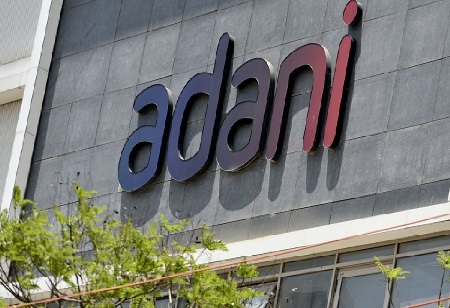Adani Group increases Rs 19,235cr debt since Hindenburg
By Consultants Review Team
 The Adani Group, in a presentation shared with the Reserve Bank of India (RBI), declared that it raised fresh debt of Rs 19,235 crore in the two months following the Hindenburg report, taking gross outstanding debt to Rs 2,27,248 crore. However, provided the cash balances of Rs 40,351 crore, the organization's net debt was Rs 1,86,897 crore nearly 17% higher than the previous year.
The Adani Group, in a presentation shared with the Reserve Bank of India (RBI), declared that it raised fresh debt of Rs 19,235 crore in the two months following the Hindenburg report, taking gross outstanding debt to Rs 2,27,248 crore. However, provided the cash balances of Rs 40,351 crore, the organization's net debt was Rs 1,86,897 crore nearly 17% higher than the previous year.
The numbers show that the Adani Group’s investment pipeline remains robust, funded by fresh debt even as group companies repaid $2.1 billion of margin-linked, share-backed financing and another $ 500 million debt for acquiring Ambuja Cement.
Sources stated that Adani would use part of the fresh debt for the Navi Mumbai airport, which comes under Adani Enterprises. The company also plans to gain fresh funding for its Mundra Petrochem project under Adani Enterprises. The company, in its presentation on the end-March financial position submitted this week, said that domestic and international banks continue to show confidence across firms by disbursing new debt and rolling over existing lines. It further added that, following the credit rating affirmations, the firm has access to credit facilities, and international and domestic debt capital market programs are ongoing.
The infrastructure group had earlier said it was pre-paying debt to reduce leverage. The presentation said the group’s combined net debt/ebitda improved to 3.27X in FY23 from 3.81X a year earlier despite the additional borrowing. Also, the debt service cover improved to 2.02X in FY23 from 1.98X in FY22.
Most of the fresh debt raised is in the energy sector. The companies include Adani Power (Rs 8,121 crore) followed by Adani Enterprises (Rs 4,248 crore), Adani Green Energy (Rs 3,348 crore), Adani Total Gas (Rs 609 crore) and Adani Ports (Rs 987 crore).
Long-term and working capital loans account for two-thirds of the debt raised, while the remaining were short-term loans, buyer’s credit and commercial paper. Half of this additional debt (51%) came from domestic PSU banks. Another 20% was raised from non-banking finance companies and domestic finance institutions, while foreign banks funded another 13%. Of the remaining, 10 % came from private banks and 6% fromdebt capital markets.




